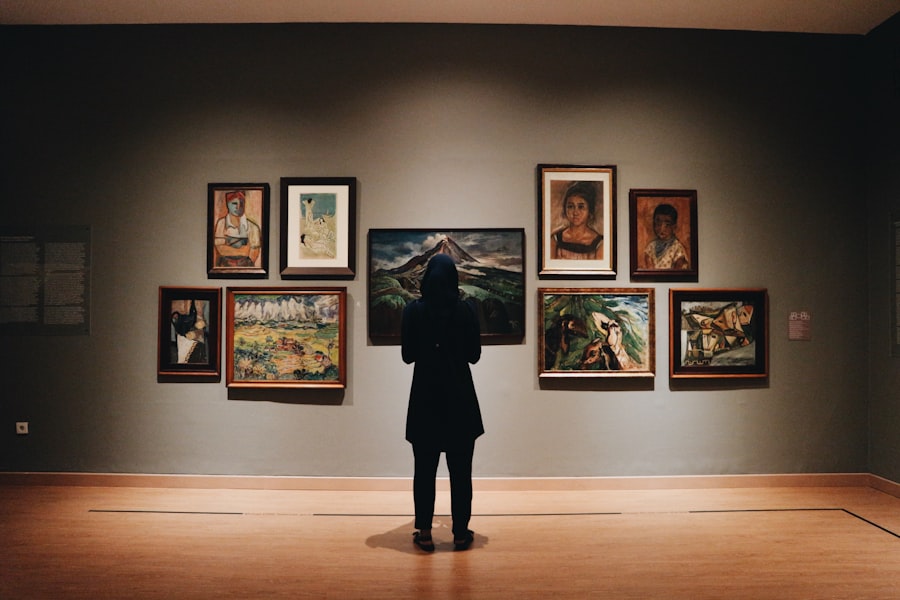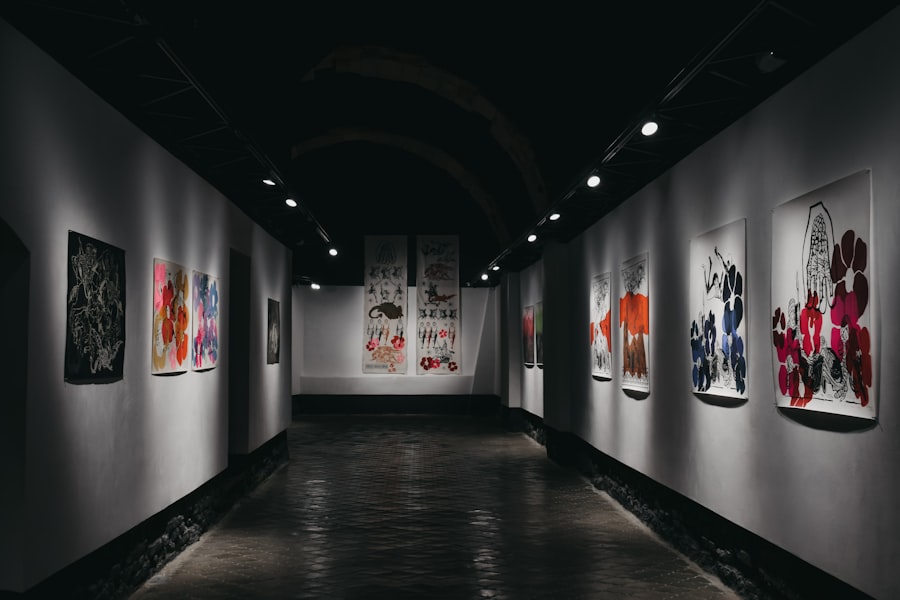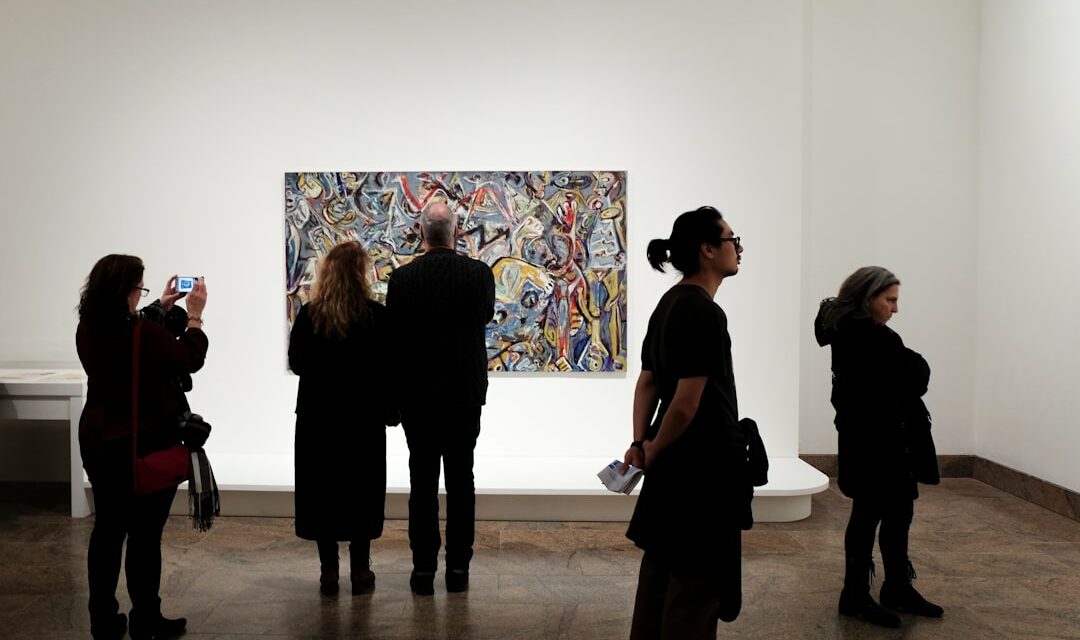In the vibrant world of art, collectors play a pivotal role in shaping the landscape of creativity and expression. The Art Collector’s Corner serves as a sanctuary for those who appreciate the beauty and significance of art, offering a space where enthusiasts can gather, share insights, and cultivate their passion. This corner is not merely a physical space; it embodies a community of individuals who recognise the value of art in enriching lives and fostering cultural dialogue.
Whether one is a seasoned collector or a novice, this corner welcomes all who wish to explore the multifaceted realm of art. Art collecting is an adventure that transcends mere acquisition; it is about forming connections with artists, understanding the narratives behind each piece, and appreciating the craftsmanship involved. The Art Collector’s Corner aims to demystify the process of collecting, providing guidance and inspiration for those eager to embark on their artistic journey.
By fostering a sense of camaraderie among collectors, this community encourages the exchange of ideas and experiences, ultimately enhancing the appreciation of art in all its forms.
How to Start Your Art Collection
Embarking on the journey of art collecting can be both exhilarating and daunting. The first step is to define your personal taste and interests. Consider what resonates with you—be it contemporary pieces, classical works, or perhaps a specific medium such as painting, sculpture, or photography.
Understanding your preferences will not only guide your choices but also make the process more enjoyable. It is essential to approach this journey with an open mind, allowing yourself to explore various styles and artists before settling on a particular direction. Once you have a clearer sense of your artistic inclinations, it is time to set a budget.
Art collecting does not have to be an expensive endeavour; there are countless affordable options available, especially from emerging artists. Establishing a budget will help you navigate the market more effectively and prevent impulsive purchases that may not align with your long-term goals. Additionally, consider attending local art fairs, exhibitions, and galleries to immerse yourself in the art scene.
Engaging with artists and fellow collectors can provide invaluable insights and inspire your collection’s direction.
Tips for Displaying and Caring for Your Art

Displaying your art collection is an opportunity to showcase your personality and aesthetic sensibilities. Thoughtful presentation can elevate the impact of each piece, transforming your space into a curated gallery. When arranging your artwork, consider factors such as scale, colour harmony, and thematic coherence.
Grouping pieces by style or colour can create a cohesive look, while mixing different mediums can add visual interest. Remember that lighting plays a crucial role in how art is perceived; natural light can enhance colours, while strategically placed artificial lighting can highlight specific features. Caring for your art is equally important to ensure its longevity and preservation.
Different mediums require different levels of care; for instance, paintings may need to be cleaned with a soft cloth, while photographs should be kept away from direct sunlight to prevent fading. It is advisable to consult with conservation professionals for valuable or delicate pieces. Additionally, consider investing in proper framing and mounting techniques that protect your artwork while enhancing its presentation.
By taking these steps, you not only preserve your collection but also honour the artists’ intentions behind their creations.
Building a Diverse Art Collection
A diverse art collection enriches both the collector’s experience and the cultural landscape. Embracing a variety of styles, mediums, and artists allows for a broader understanding of artistic expression and its evolution over time. When building your collection, consider incorporating works from different cultures and historical periods.
This not only adds depth to your collection but also fosters appreciation for the global tapestry of art. Moreover, diversity in your collection can stimulate conversations and provoke thought among viewers. Each piece tells a story, reflecting the artist’s unique perspective and cultural background.
By curating a collection that spans various genres—be it abstract, realism, or conceptual—you create an engaging dialogue between artworks that can inspire both you and your guests. As you explore new artists and movements, remain open to unexpected discoveries; sometimes the most profound connections arise from pieces that initially seem outside your comfort zone.
Navigating the Art Market: Buying and Selling
The art market can be complex and intimidating for newcomers, yet understanding its dynamics is essential for successful collecting. Familiarise yourself with different avenues for purchasing art—galleries, auctions, online platforms, and art fairs each offer unique opportunities and challenges. Researching artists and their market trends can provide valuable insights into potential investments.
Keep in mind that art is not solely about monetary value; it is also about personal connection and enjoyment. When it comes to selling art from your collection, approach the process with careful consideration. Whether you choose to sell through an auction house or privately, ensure that you have a clear understanding of the piece’s provenance and condition.
Transparency is key; potential buyers will appreciate detailed information about the artwork’s history and significance. Additionally, consider seeking professional appraisals to establish fair pricing. Ultimately, selling should be approached as an opportunity to share your passion with others while making room for new acquisitions in your collection.
The Importance of Supporting Emerging Artists

In an ever-evolving art world, supporting emerging artists is crucial for fostering innovation and diversity within the creative community. These artists often bring fresh perspectives and unique voices that challenge conventional norms and push boundaries. By investing in their work, collectors not only contribute to their careers but also play a vital role in shaping the future of art itself.
Emerging artists frequently face significant barriers in gaining recognition and access to resources. By purchasing their work or promoting their exhibitions, collectors can help elevate these artists’ profiles within the industry. Additionally, engaging with emerging talent allows collectors to discover new trends before they become mainstream, creating an exciting dynamic within their collections.
Supporting these artists fosters a sense of community and collaboration that enriches the entire art ecosystem.
The Role of Art in Interior Design
Art serves as a powerful tool in interior design, capable of transforming spaces and influencing moods. Thoughtfully selected artwork can serve as a focal point in a room or complement existing decor seamlessly. When integrating art into your interior design scheme, consider the overall aesthetic you wish to achieve—whether it be minimalist, eclectic, or traditional—and select pieces that resonate with that vision.
Moreover, art has the ability to evoke emotions and create atmospheres within spaces. A vibrant abstract painting may energise a room, while serene landscapes can instil calmness. The placement of artwork also plays a significant role; hanging pieces at eye level ensures they are easily appreciated while creating visual balance within the space.
Ultimately, incorporating art into interior design not only enhances the aesthetic appeal but also reflects personal taste and values.
The Art Collector’s Corner: A Community for Art Enthusiasts
The Art Collector’s Corner stands as a testament to the power of community among art enthusiasts. It provides a platform for individuals to connect over their shared passion for creativity while fostering an environment of learning and growth. Through workshops, discussions, and exhibitions, members can engage with one another, exchanging ideas and experiences that enrich their understanding of art.
This community aspect is vital in nurturing new collectors who may feel overwhelmed by the complexities of the art world. By sharing knowledge about collecting strategies, market trends, and artist insights, seasoned collectors can guide newcomers on their journeys. The Art Collector’s Corner ultimately embodies the spirit of collaboration—encouraging individuals to celebrate their love for art while supporting one another in their collecting endeavours.
In conclusion, The Art Collector’s Corner serves as both a resource and a community for those passionate about art collecting. By providing guidance on starting collections, displaying artwork effectively, navigating the market, supporting emerging artists, integrating art into interior design, and fostering connections among enthusiasts, this corner enriches the experience of collecting art in all its forms. As we continue to explore this vibrant world together, we celebrate not only individual tastes but also the collective appreciation for creativity that unites us all.
If you are interested in exploring different art movements, you may want to read An Introduction to Realism Art Movement. This article delves into the history and characteristics of realism in art, providing a deeper understanding of this influential movement. Understanding different art movements can enhance your appreciation for the diverse range of artistic styles and techniques. So, if you enjoy learning about art, be sure to check out this insightful article.


